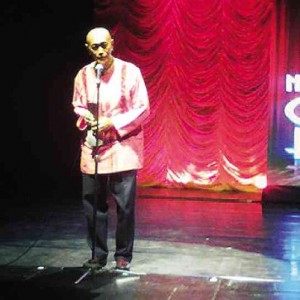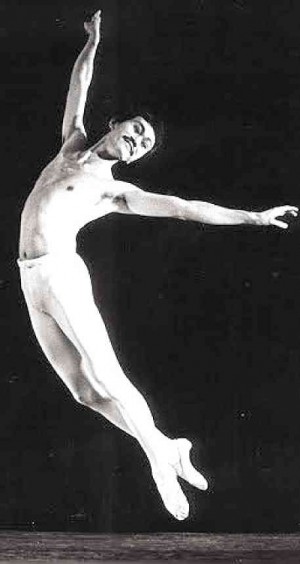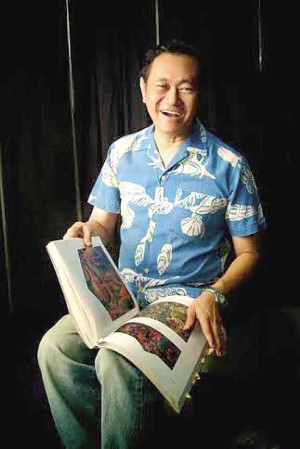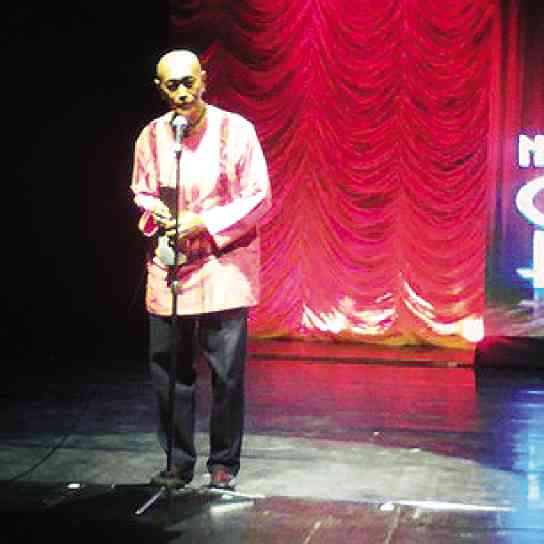
This year’s Philstage Natatanging Gawad Buhay! (Lifetime Achievement Award) recipient for Dance is 73, hails from Negros, and counts a 45-year love affair with the art form where he is recognized as a distinguished dance chronicler, educator and critic.
Basilio Esteban Villaruz recalls that he started ballet lessons at age 14 and had to scrimp on fare since his father would not hear of anyone in the family being involved with dance, much less spending for it. In Bacolod, he studied ballet under Elsie Uytiepo, a pupil of the Russian dancer Luva Adameit, and her brother Pancho, who was meanwhile a pupil of pioneering dance mentor Ricardo Cassell.
Villaruz persevered in his dance lessons while earning a degree in English and History from Bacolod’s West Negros College in the early ’60s. While doing graduate work in Asian Studies at the Far Eastern University, he got an endorsement to study ballet with another dance pioneer, Remedios “Totoy” de Oteyza, who is one of the first teachers of prima ballerina Maniya Barredo.
But his entrance into Manila’s ballet scene will come later, as he went back to Iloilo and taught English at the Central Philippine University. He also supervised a student ballet group for three years, guided by a basic choreographer’s manual. Then he went back to Manila to finish a master’s degree in comparative literature. In between teaching dance and attending dance classes, he wrote dance reviews.
Ringside view
In Manila, Villaruz joined Alice Reyes’s modern dance group, which later became Ballet Philippines. He had stints with Oteyza’s Hariraya Ballet Company and later became balletmaster, choreographer and artistic director of Dance Theater Philippines, where he met the young Lisa Macuja and Anna Villadolid.
It was after joining the Manila dance milieu that he had a ringside view of the state of dance in the country. Even with the emergence of professional dance groups like Ballet Philippines, Philippine Ballet Theater and much later, Ballet Manila, he noted that dancers still didn’t get the salary they deserved.

“Even lead dancers were not paid well and apprentices and extras in productions were paid per performance,” he recalled. “The old Dance Theater Philippines was probably better off because they had a weekly allowance with or without shows.”
To survive, dancers moonlighted in Pilita Corrales’ TV show. DTP later went moribund, but Tita Radaic revived it for the weekly show “Ballet at the Park.”
While dancers lived on practically nothing, the prospects for choreographers like Villaruz were even bleaker. After all, “How often are choreographers asked to do works, and thus paid? Today, only Ballet Manila invites choreographers to contribute to their repertoire. Dancers are also more stable in that company. But on the whole, if there are subsidies for groups or productions, these are still not adequate—sometimes not even given equitably by subsidizing institutions. Thus, many of our good dancers go abroad, especially to Hong Kong Disneyland. Many fine and dedicated dancers in nonmainstream (independent) groups also go to HK, Singapore, even Malaysia and Indonesia.”
Body of work
Despite the slim rewards, Villaruz soldiered on. To date, he has choreographed nearly 100 dance works that have been performed here and abroad. He has served countless times as national and international adjudicator for dance competitions. Through collaboration with colleagues, he was also chiefly responsible for designing a comprehensive dance curriculum for the UP College of Music.
For eight years, he was in the dance jury of the National Music Competitions for Young Artists. He has also written two books on dance: “Treading Through 45 Years of Philippine Dance” (UP Press 2006) and the three-volume “Walking Through Philippine Theater” (UST Publishing, 2012).
He is the current president of the World Dance Alliance-Philippines, which has been responsible for the yearly Wi-Fi Body events that showcase contemporary dance and dancers.
Among these dancers is Myra Beltran, who says of Villaruz: “If not for his writings, Philippine Dance will not be represented in international fora for dance. If not for his reviews here and abroad, the Philippines will not even be taken seriously as a place where dance exists.”
Paltry support
While musicals and straight plays have become more commercially visible in recent years, support for the arts, especially dance, remains paltry, says Villaruz.
He notes that only four dance groups enjoy CCP subsidy at present—Ballet Philippines, Philippine Ballet Theater, the Ramon Obusan Folkloric Dance Group and the Bayanihan Dance Company, while nonmainstream groups are provided venue grants once a year.
More than the lack of support is the lack of understanding.

“Barkadahan can infiltrate institutional bodies in the arts. The bureaucracy contributes to this gross ignorance of the artists’ daily life. They are not aware that dance is such a short career. Even the educational system doesn’t understand this. Some so-called ‘prestigious’ events are given so much subsidy, forgetting those that do work in dance, music, theater from day to day. Even UP doesn’t understand how dancers work. My experience as a dancer meant I had to work daily and perform often during my short shelf life. But how do dancers feed themselves, pay for fare, cope with injuries?”
There is, however, great fulfillment in passing on the art form to the next generation.
“Teaching is important in the performing arts. It’s the direct handing on of art. In Asia, the traditional gurus of dance, theater, music are revered. How many are given that role in our country?
“Teaching one’s art makes one understand it more, and thus inculcate it with more insight, breadth of experience, etc. You infuse your enthusiasm and conviction as an artist on the young ones. You also grow in understanding your art—beyond what you used to do, beyond your colleagues. It’s a privilege to be a tutor in the arts.”













































